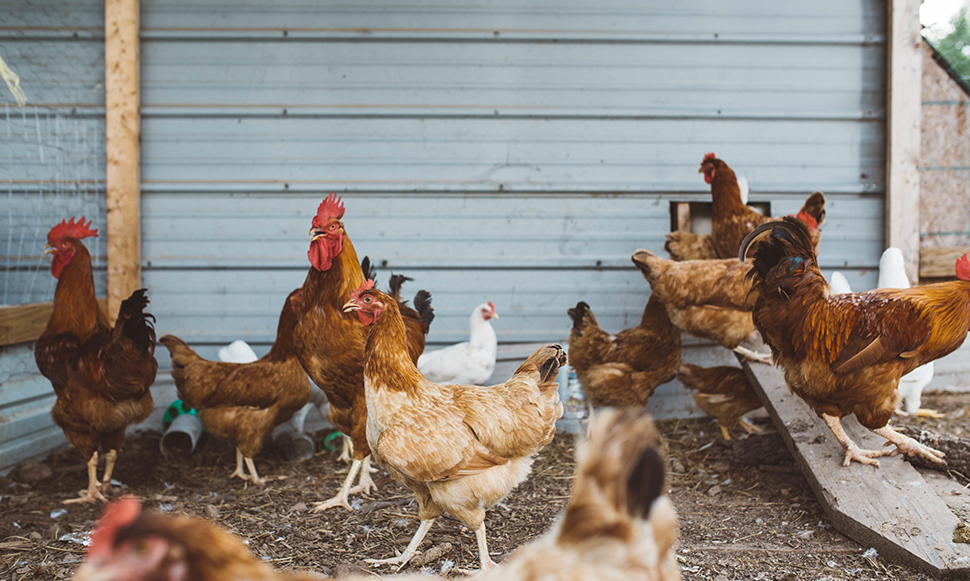Evaluación de la relación molar poliol/diisocianato en las propiedades fisicoquímicas de biopoliuretano producido a partir de grasa avícola
DOI:
https://doi.org/10.31644/IMASD.35.2024.a05Palabras clave:
Bioplásticos, Residuos, Rigidez, CompresiónResumen
Los poliuretanos convencionales son los plásticos con mayor demanda en el mundo, se fabrican a partir de derivados del petróleo que es un recurso no renovable y contribuye a la contaminación ambiental. Sin embargo, los biopoliuretanos se producen a partir de fuentes renovables, como aceites vegetales o azúcares derivados de plantas, ayudan a reducir la dependencia de los combustibles fósiles y disminuyen la huella de carbono. La síntesis de biopoliuretanos permite ajustar las propiedades de los materiales finales para adaptarse a diferentes aplicaciones como la industria automotriz, la construcción, la fabricación de muebles y la industria textil. Pueden variar en términos de resistencia, elasticidad, rigidez y capacidad de carga. Estas características dependen de la estructura química y concentración del poliol y diisocianato con el que se producen.
En este trabajo se describe la síntesis de poliuretanos utilizando poliol proveniente de grasa avícola y diisocianato de isoforona y el efecto de la relación poliol/isocianato (OH/NCO) en las propiedades fisicoquímicas de los poliuretanos obtenidos. En los espectros de infrarrojo (FTIR) se observó la presencia de la banda 3350 cm-1 que corresponde al enlace -NH y la ausencia del estiramiento del grupo isocianato (NCO) a 2270 cm-1, lo que indica que todos los grupos isocianato reaccionaron durante la polimerización. Se evaluaron poliuretanos generados con relaciones molares poliol/isocianato (OH/NCO) 1:3, 1:4 y 1:5 observándose que a mayor relación molar aumenta la rigidez y la resistencia a la compresión del biopoliuretano, probablemente por la mayor formación de entrecruzamientos.
Descargas
Citas
AOCS Te 1a-64 (2009). Método de prueba estándar para la determinación de valor ácido de ácidos grasos comerciales.
Acuña, P., Zhang, J., Yin, G., Liu, X., & Wang, D. (2020). Bio-based rigid polyurethane foam from castor oil with excellent flame retardancy and high insulation capacity via cooperation with carbon-based materials. Journal of Materials Science, 56(3), 2684–2701. https://doi.org/10.1007/s10853-020-05125-0
Ang, K., Lee, C., Cheng, S., & Chuah, C. (2014). Synthesis of palm oil-based polyester polyol for polyurethane adhesive production. Journal of Applied Polymer Science, 131 (6), 1–8. https://doi.org/10.1002/app.39967
Bayer, O., Siefken, W., Rinke, H., Orthner, L., Schild, H. (1937). A process for the production of polyurethanes and polyureas. German Patent DRP 728981.
Calvo-Correas, T., Santamaria-Echart, A., Saralegi, A., Martin, L., Valea, Á., Corcuera, M. A., & Eceiza, A. (2015). Thermally-responsive biopolyurethanes from a biobased diisocyanate. European Polymer Journal, 70, 173–185. https://doi.org/10.1016/j.eurpolymj.2015.07.022
Chen, S., Yang, M., Han, Y., Liu, H., & Zou, H. (2021). Hydrophobically modified sustainable bio-based polyurethane for controllable release of coated urea. European Polymer Journal, 142, 110114. https://doi.org/10.1016/j.eurpolymj.2020.110114
Dai Z., Jiang, P., Lou, W., Zhang, P., Bao, Y., Gao, X., Xia, J., & Haryono, A. (2020). Preparation of degradable vegetable oil-based waterborne polyurethane with tunable mechanical and thermal properties. European Polymer Journal, 139, 109994. https://doi.org/10.1016/j.eurpolymj.2020.109994
Daneshvar, S., Behrooz, R., Najafi, S., & Sadeghi, G. (2019). Characterization of polyurethane wood adhesive prepared from liquefied sawdust by ethylene carbonate. Bioresources, 14(1), 796-815. https://10.15376/biores.14.1.796-815
Fu, Q., Long, Y., Gao, Y., Ling, Y., Qian, H., Wang, F., & Zhu, X. (2019). Synthesis and properties of castor oil based plasticizers. RSC Advances, 9(18), 10049–10057. https://doi.org/10.1039/c8ra10288k
Galeano L., & Guapacha M. (2011). Aprovechamiento y caraterización de los residuos grasos del pollo para la producción de un biocombustible. Tesis Químico Industrial, Universidad Tecnológica de Pereyra.
Hernández-Cruz, M. (2015). Tesis de Maestría. Modificación de la viscosidad de grasa de pollo-biodiesel con aditivos, para la formulación de biolubricantes. Instituto Tecnológico de Tuxtla Gutiérrez, Chiapas.
Ionescu, M., Ji, Y., Shirley, W., & Petrović, Z. (2011). Polyurethanes from hybrid vegetable oil/petrochemical polyester polyols. ACS Symposium Series, 1063, 73–93. https://doi.org/10.1021/bk-2011-1063.ch005
Ismail, E., Motawie, A., & Sadek, E. (2011). Synthesis and characterization of polyurethane coatings based on soybean oil–polyester polyols. Egyptian Journal of Petroleum, 20(2), 1–8. https://doi.org/10.1016/j.ejpe.2011.06.009
Jayavani, S., Sunanda, S., Varghese, T., & Nayak, S. (2017). Synthesis and characterizations of sustainable polyester polyols from non-edible vegetable oils: Thermal and structural evaluation. Journal of Cleaner Production, 162, 795–805. https://doi.org/10.1016/j.jclepro.2017.06.040
Kasprzyk, P., & Datta, J. (2019). Novel bio-based thermoplastic poly(ether-urethane). Correlations between the structure, processing and properties. Polymer, (160) 1-10, https://doi.org/10.1016/J.POLYMER.2018.11.032.
Marcano-Serrano, M. (2008). “Obtención de Polioles a Partir de Aceites Vegetales para la Fabricación de Poliuretano”. Tesis de Licenciatura. Universidad Simón Bolívar, Sartenejas.
Mathew, A., Kurmvanshi, S., Mohanty, S., & K. Nayak, S. (2017). Influence of structure-property relationship on the optical, thermal and mechanical properties of castor oil based transparent polyurethane for catheter applications. Journal of Macromolecular Science, Part A: Pure and Applied Chemistry, 54(11), 772–781. https://doi.org/10.1080/10601325.2017.1332468
Narine, S., Yue, J., & Kong, X. (2007). Production of polyols from canola oil and their chemical identification and physical properties. Journal of the American Oil Chemists’ Society, 84(2), 173–179. https://doi.org/10.1007/s11746-006-1021-5
Nguyen Dang, L., Le Hoang, S., Malin, M., Weisser, J., Walter, T., Schnabelrauch, M., & Seppälä, J. (2016). Synthesis and characterization of castor oil-segmented thermoplastic polyurethane with controlled mechanical properties. European Polymer Journal, 81, 129–137. https://doi.org/10.1016/j.eurpolymj.2016.05.024
Purwanto, E. (2010). The Synthesis of Polyol from Rice Bran Oil (RBO) through epoxidation and hydroxylation reactions. Tesis de Maestría, 73–74. Universidad de Adelaida.
Rangarajan, B., Havey, A., Grulke, E., Culnan, P. (1995). Kinetic parameters of a two-phase model for in situ epoxidation of soybean oil. Journal of the American Oil Chemist’s Society, 72, 10, 1161–1169. https://doi.org/10.1007/BF02540983
Ramírez, Y., Meza, R., Luján, M., Castañón, H. (2023) Tesis de Maestría. Biopoliuretanos a partir de residuo avícola. Instituto Tecnológico de Tuxtla Gutiérrez, Chiapas.
Rojas-González, A., & Girón-Gallego, E. (2011). Variables de operación en el proceso de transesterificación de grasas animales: Una revisión. Ingenieria y Universidad, 15(1), 197–218. http://www.scielo.org.co/scielo.php?script=sci_arttext&pid=S012321262011000100011&lng=en&nrm=iso.
Rosnah, S., Min, M., Ahmad, A., Mansor, A., & Tiankhoon, L. (2016). Preparation and characterization of Jatropha oil-based Polyurethane as non-aqueous solid polymer electrolyte for electrochemical devices. Electrochimica Acta, 222, 293–302. https://doi.org/10.1016/j.electacta.2016.10.173
Salimon, J., Abdullah, B., Yusop, R., & Salih, N. (2014). Synthesis, reactivity and application studies for different biolubricants. Chemistry Central Journal, 8(1), 1–11. https://doi.org/10.1186/1752-153X-8-16
Shen, Y., He, J., Xie, Z., Zhou, X., Fang, C., & Zhang, C. (2019). Synthesis and characterization of vegetable oil based polyurethanes with tunable thermomechanical performance. Industrial Crops and Products, 140, 111711. https://doi.org/10.1016/j.indcrop.2019.111711
Valero, M., Pulido, J., Ramírez, Á., & Cheng, Z. (2008). Sintesis de poliuretanos a partir de polioles obtenidos a partir del aceite de higuerilla modificado por transesterificación con pentaeritritol. Quimica Nova, 31(8), 2076–2082. https://doi.org/10.1590/S0100-40422008000800031.
Zhang, C., Ding, R., & Kessler, M. (2014). Reduction of epoxidized vegetable oils: A novel method to prepare bio-based polyols for polyurethanes. Macromolecular Rapid Communications, 35(11), 1068–1074. https://doi.org/10.1002/marc.201400039
Zhang, C., Madbouly, S., & Kessler, M. (2015). Biobased polyurethanes prepared from different vegetable oils. ACS Applied Materials and Interfaces, 7(2), 1226–1233. https://doi.org/10.1021/am5071333
Zieglowski, M., Trosien, S., Rohrer, J., Mehlhase, S., Weber, S., Bartels, K., Siegert, G., Trellenkamp, T., Albe, K., & Biesalski, M. (2019). Reactivity of isocyanate-functionalized lignins: a key factor for the preparation of lignin-based polyurethanes. Frontiers in Chemistry, 7:562. https://doi.org/10.3389/fchem.2019.00562

Publicado
Versiones
- 07-06-2024 (2)
- 01-02-2024 (1)
Cómo citar
Número
Sección
Licencia

Esta obra está bajo una licencia internacional Creative Commons Atribución-NoComercial-CompartirIgual 4.0.























